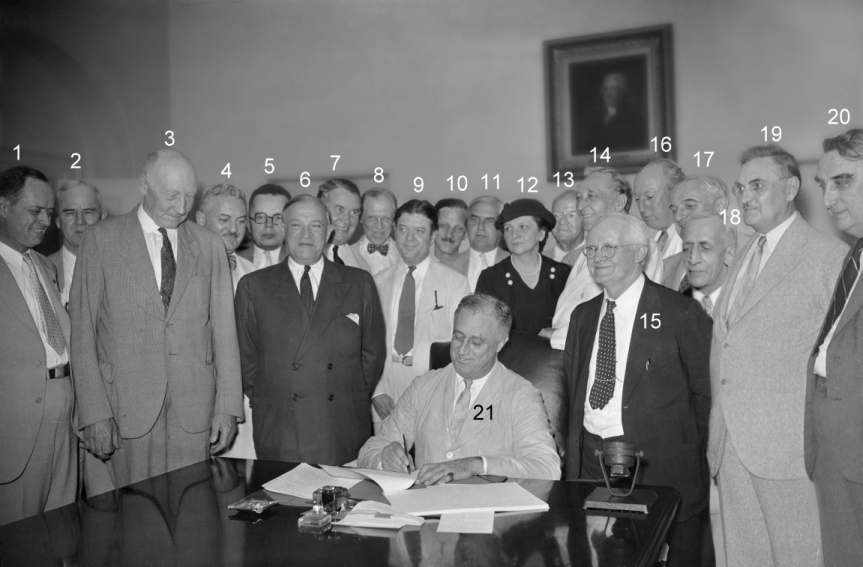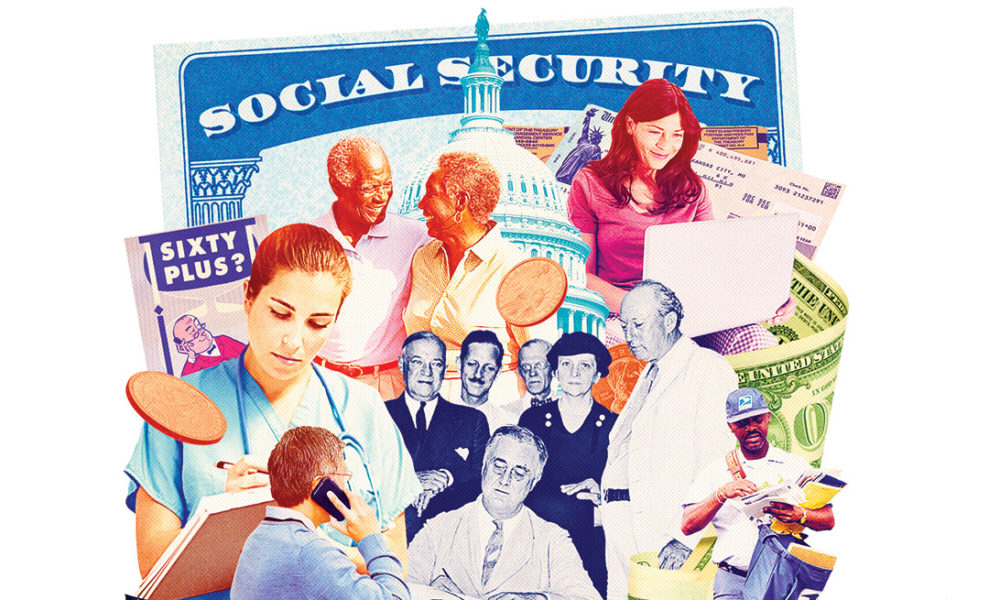It all started with the Great Depression in the 1930s, which left more than half of the people in the U.S. unable to provide for themselves. The depression brought about the crumbling of the stock market and the disappearance of retirement savings for many senior American citizens. As a result, Social Security was implemented as a form of social insurance.
Social Security was initially very controversial. Many citizens viewed Social Security as having an agenda that supports socialism. Debates raged on as to how the benefits of Social Security would be sponsored.
Many people suggested that the individuals expecting the benefits should be funded by payments that they had made during their careers. This idea was ideal, but it would be a disadvantage to those who already worked for some time before implementing the act. They wouldn’t have enough time to raise the money needed to secure their benefits.
Naysayers believed it would intentionally encourage the loss of jobs. Others found that idea to be flawed. In fact, just the opposite occurred. As the elderly retired, job opportunities for younger people grew, lowering unemployment levels.
Where it Started: The Social Security Act of 1935

According to the Social Security Administration (SSA) historians, the social security program began with the Social SecurityAct of 1935, which was initially called the Economic Security Act. The actual term “Social Security” was coined in the United States by activist Abraham Epstein. He led a group called the American Association for Social Security.
Social Security taxes and benefit payments began in January 1937. At the start, the government paid retirement benefits only to a family’s primary worker. In 1939, survivor’s benefits and benefits for the retiree’s spouse and children were added.
Disability benefits began in 1956, and in 1965 Congress signed Medicare into law. The Civil Service Commission adopted the Social Security Number (SSN) as an official federal employee identifier in 1961. The Internal Revenue Service approved it as the official taxpayer ID number in 1962.
While the Social Security Act did not specify the use of numbered cards, it did call for the formation of a record-keeping plan. The first group of SSNs was assigned and distributed through 45,000 local post offices across the United States since the SSA had not yet developed its current network of 1,300 field offices. The cards themselves were created in more than 1,000 post offices designated as “typing centers.”
From 0 to 30 Million Social Security Number (SSN) Applications in One Year
Between November 1936 and June 1937, more than 30 million SSN applications were processed. First, the SSA distributed SS-4 applications to employers, asking them to report the number of employees in their businesses. Then, the SSA sent the appropriate number of SS-5 forms to employees for them to complete.
When the employees returned these forms to the post offices and typing centers, the SSA assigned SSNs and typed them up on the first Social Security cards. Fred Happel, the New York artist who had created the Flying Tigers logo used in World War II, designed the cards (SSA.gov: History has a picture of the original design). The post offices sent these number assignments to the master files at Social Security headquarters in Baltimore, Maryland.
So Who Got That First Number?
According to government historians, no one knows for sure. The first card was issued sometime in mid-November 1936 at one of the 1,074 typing centers. Officially, no cards should have been issued before November 16, SSA historians say, provided that the 45,000 local post offices followed procedure, which is unlikely. Even if the first issuance date could be determined, hundreds of thousands of citizens across the country likely received their cards on that day.
When the first block of records was complete, the head of the SSA’s Division of Accounting Operations pulled off the top record — SSN 055-09-0001 — and designated it as the first official card.
That first Social Security record was assigned to a 23-year-old New York man, John David Sweeney, Jr. Ironically, Sweeney died in 1974 at the age of 61 without ever receiving any Social Security benefits (full retirement age was initially set at 65; today, benefits are reduced by five-ninths of 1 percent for each month you are retired before 65, up to a maximum of 20 percent for people who retire the month they reach 62). Sweeney’s widow, however, did receive benefits until she died eight years later.
In January 1940, the First Recipient Receives Monthly Benefits
The first person to receive monthly benefits was Ida May Fuller from Vermont, who retired in November 1939 and started collecting benefits in January 1940 at age 65. In the three years that Fuller worked under the program, she contributed a total of $24.75. Her first benefit check was for $22.54, and she went on collecting benefits for 35 years, until 1975, when she died at age 100. She received a total of $22,888.92.
Now you know. Click here for a deeper dive!
Our mission at the Council on Aging of Central Oregon is to improve the lives of older adults, especially those who are struggling. If you or anyone 60+ needs help, call (541) 678-5483 or visit www.councilonaging.org.



Good day, the editors of the website https://www.councilonaging.org/ .
My name is James. Im webmaster of the site http://ssa-office.com/. Our site contains information about Social Security Offices in all states of the USA (addresses, phone numbers, location, etc.), and answers to popular questions related to social security for US citizens.
Every U.S. citizen is faced the need to apply to Social Security Office. However, on your web-site I couldn’t find information about the nearest Social Security Offices.
Unfortunately I couldn’t find any information about Social Security Office on your web-site. Here is the detailed information about the social-office https://ssa-office.com/org/social-security-office-in-oregon-city/ which will be useful for your citizens.
We’d like to propose you to link to our page somewhere on your web-site https://www.councilonaging.org/blog/how-our-social-security-system-unfolded-its-quite-a-story/ Our web-site contains detailed description of the office. This will make it much easier to find useful
information for many users of your site.
I look forward to your reply. Thank you in advance!
James
We will be adding a link to https://www.ssa.gov/locator/ for individuals to find a social security office.
Thanks for pointing out we did not have one on our site.
Denise
Knowing the social security system when it gets started is very essential. Looking back to history makes us appreciate what we have now.